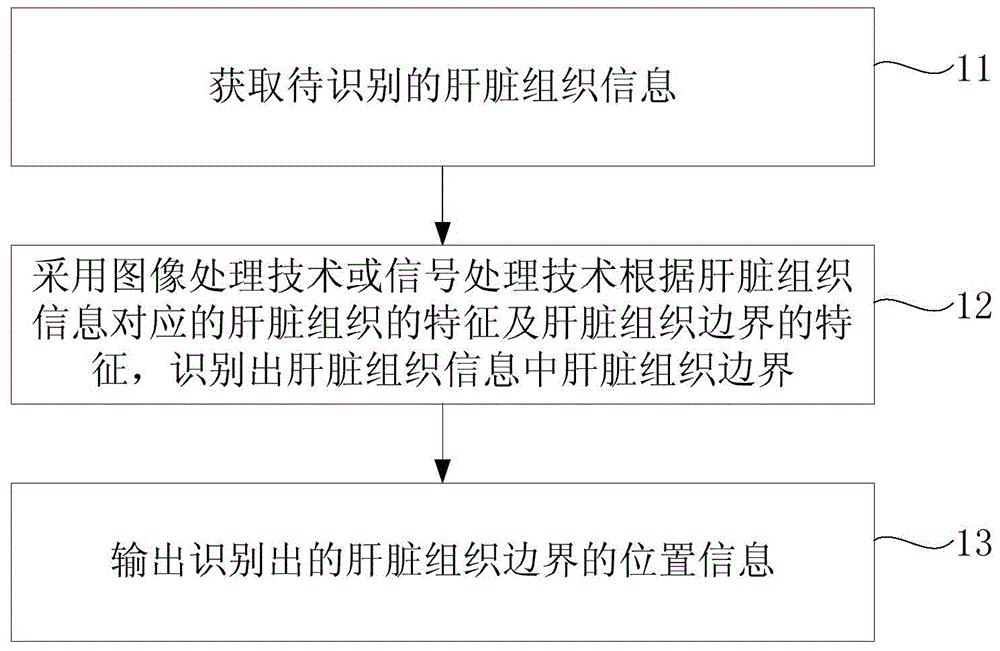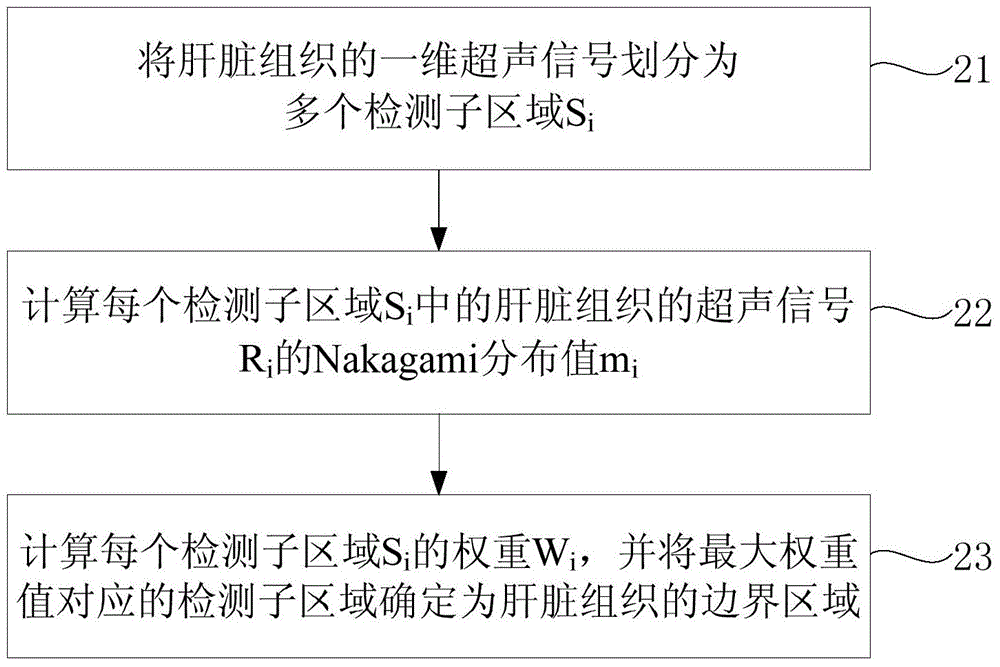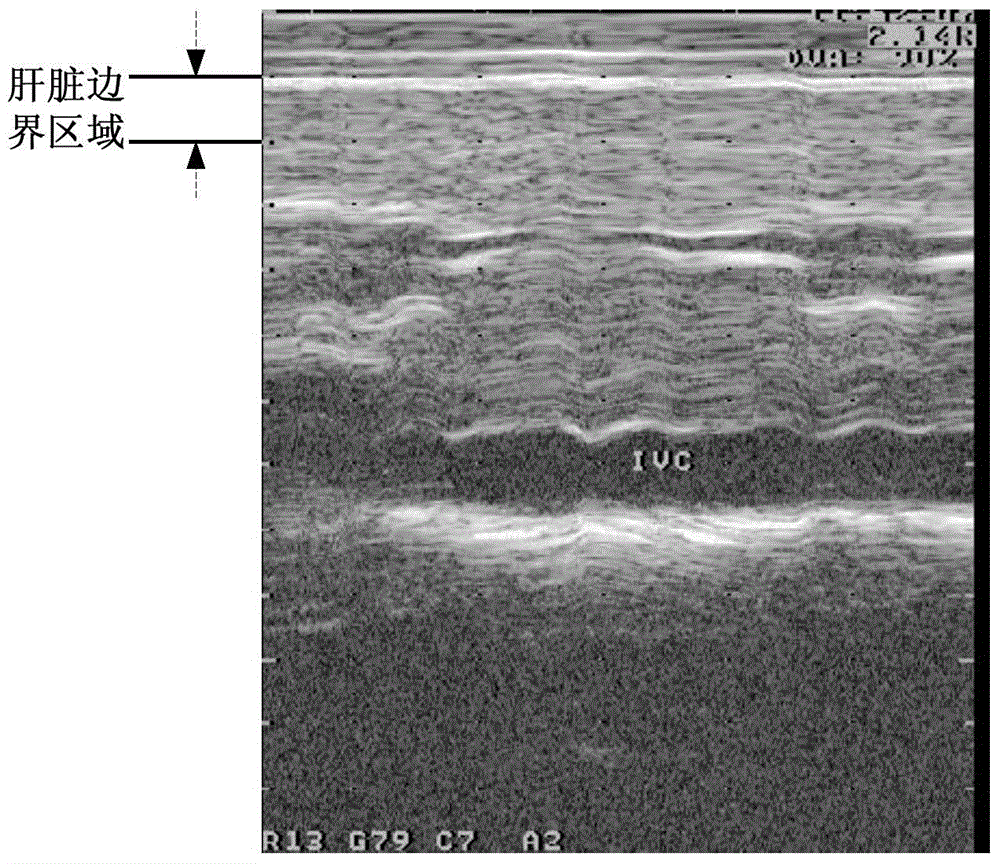Liver boundary identification method and system
A boundary recognition and boundary technology, applied in the liver boundary recognition method and system field, can solve the problems of high operator requirements, long recognition time, low efficiency of liver boundary recognition, etc., and achieve the effect of improving recognition efficiency and efficient recognition
- Summary
- Abstract
- Description
- Claims
- Application Information
AI Technical Summary
Problems solved by technology
Method used
Image
Examples
no. 1 example
[0024] figure 1 It is an implementation flowchart of the liver boundary identification method provided in the first embodiment of the present invention, and the method can be executed by the liver boundary identification system. Such as figure 1 As shown, the implementation process includes:
[0025] Step 11. Obtain the liver tissue information to be identified.
[0026] Wherein, the liver tissue information may be an A-mode ultrasonic signal of the liver tissue, an M-mode ultrasonic signal of the liver tissue, a B-mode ultrasonic image of the liver tissue, a CT image of the liver tissue or an MRI image of the liver tissue.
[0027] According to the liver tissue information, the type of liver tissue information can be obtained, that is, the type of liver tissue information can be ultrasonic signals, such as A-mode ultrasonic signals of liver tissue and M-mode ultrasonic signals of liver tissue, or two-dimensional ultrasonic images, such as liver The B-mode ultrasound image ...
no. 2 example
[0035] The second embodiment is a specific optimization of step 12 in the first embodiment of the present invention, and this method is applicable to one-dimensional ultrasound signals of liver tissue. figure 2 is an implementation flowchart of the liver boundary recognition method provided in the second embodiment of the present invention, image 3 It is an effect diagram of boundary recognition based on M-mode ultrasound signals of liver tissue in the second embodiment of the present invention. combine figure 2 and image 3 , the method includes:
[0036] Step 21. Divide the one-dimensional ultrasound signal of the liver tissue into multiple detection sub-regions S i .
[0037] The one-dimensional ultrasound signal of the liver tissue may be an A-mode ultrasound signal of the liver tissue or an M-mode ultrasound signal of the liver tissue. Assuming that an ultrasound signal contains n sampling points, and the scanning depth of the corresponding ultrasound signal of th...
no. 3 example
[0051] The third embodiment is a specific optimization of step 12 in the first embodiment of the present invention, and this method is applicable to two-dimensional ultrasound images of liver tissue. Figure 4 is an implementation flowchart of the liver boundary recognition method provided in the third embodiment of the present invention, Figure 5 It is an effect diagram of boundary recognition based on a B-mode ultrasound image of liver tissue in the third embodiment of the present invention. combine Figure 4 and Figure 5 , the method includes:
[0052] Step 31. Divide the two-dimensional ultrasound image of the liver tissue into a plurality of rectangular detection sub-regions R ij .
[0053] The two-dimensional ultrasound image of the liver tissue may be a B-mode ultrasound image of the liver tissue. Assuming that the size of a B-ultrasound image is w*h, where w is the width of the two-dimensional ultrasound image of the liver tissue, h is the height of the two-dime...
PUM
 Login to View More
Login to View More Abstract
Description
Claims
Application Information
 Login to View More
Login to View More - R&D
- Intellectual Property
- Life Sciences
- Materials
- Tech Scout
- Unparalleled Data Quality
- Higher Quality Content
- 60% Fewer Hallucinations
Browse by: Latest US Patents, China's latest patents, Technical Efficacy Thesaurus, Application Domain, Technology Topic, Popular Technical Reports.
© 2025 PatSnap. All rights reserved.Legal|Privacy policy|Modern Slavery Act Transparency Statement|Sitemap|About US| Contact US: help@patsnap.com



